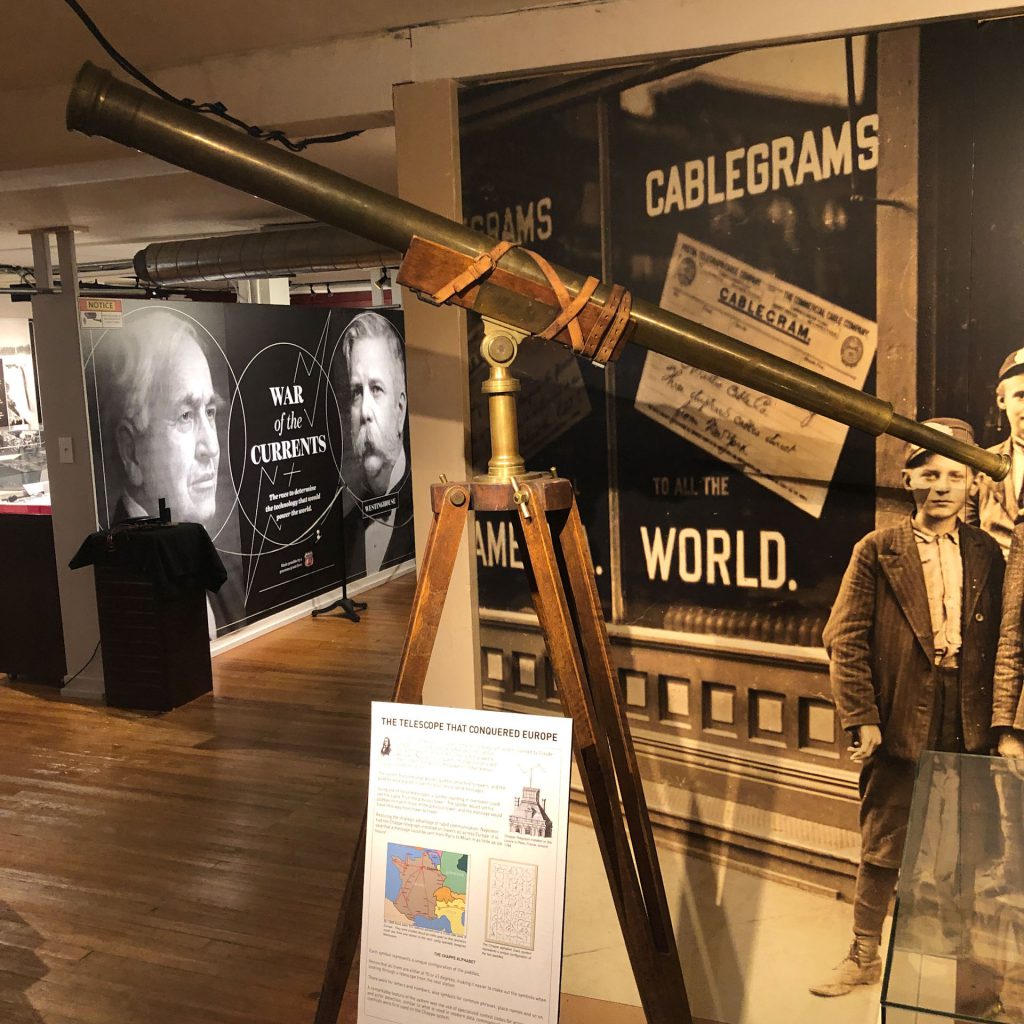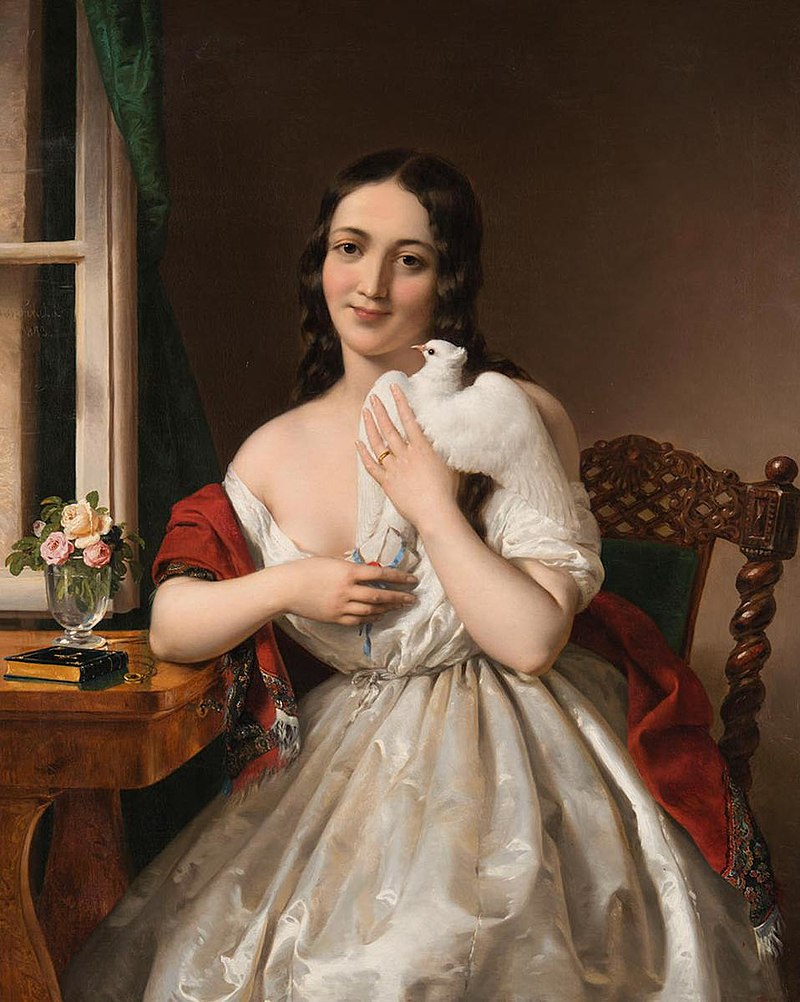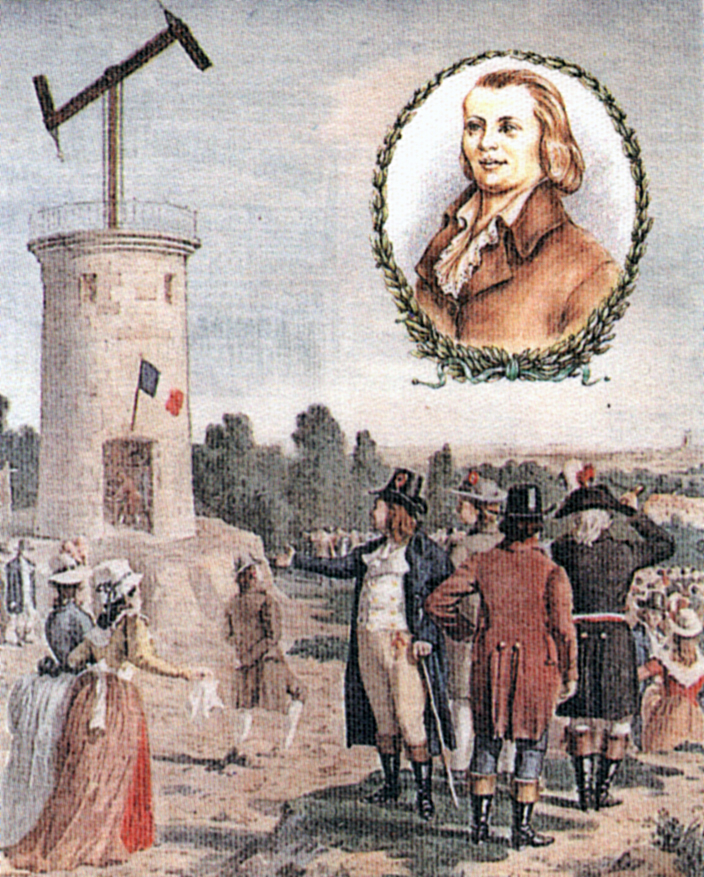The Chappe telegraph system played a key role in Napoleon’s conquest of Europe and provided the first demonstration of the power of instantaneous communication.

A spectacular Chappe Telegraph Telescope (1840) is on display in the SPARK Museum’s Telegraph Gallery.
One of the surprising pleasures of studying history is learning about the many amenities people have always wanted. Advances like high-speed travel, recorded music, and machines that wash our clothing for us are just some of the significant conveniences—some say necessities—people have always wished for, and many of us enjoy today.
Light is an excellent example of something everyone has always wanted. People have always searched for the ability to create light; but until recently, artificial light was rare.
At one time—for a long time—light creating substances like coal, oil, and gas—were expensive (with whale oil being among the most precious—then available only to kings & queens—and whalers!).
Today, and for much of the world, light is considered almost a birthright as we effortlessly enjoy all the artificial light we desire, rarely considering the expense.
(Today there is growing concern about the negative effects of excessive artificial light on the natural world; but that’s another story.)
Another wish-come-true is our yearning to communicate messages—not just across town, but across the world. History shows us that long before the World Wide Web and cell phone technology, people have wanted to communicate messages great distances, and faster than a strong horse or fast ship. Well before the Internet, or telephone, or electric telegraph, or pony express, people were communicating in a variety of creative ways.

Every culture seems to have perfected their own system of sending a signal or message. Drums, logs, bells, cannons and explosions all use big-sound to transmit a signal or simple message for miles, via the speed of sound (about 5 seconds a mile). Smoke signals, bonfires, flairs, and flags were commonly used to signal friends and enemies alike, as long the weather cooperates. Signaling systems go back several centuries, sometimes being quite extensive and sophisticated as in China, but generally not capable of transmitting detailed messages.
Ancient Persians used homing pigeons as a method of communicating a detailed message 2000 years ago. So did the Romans, who used pigeon messengers during military campaigns, and the Greeks who used pigeons to transmit the names of the winners at their Olympic Games to various sister cities. They worked well, as long as they didn’t get lost or eaten.

The first successful telegraph system was developed by French inventor Claude Chappe in 1792. The network featured large paddles which were placed at specific angles in order to represent the symbols in the Chappe alphabet. Using a series semaphores, towers, and custom telescopes, Chappe and his brothers created a line-of-sight communications network that would soon total 556 stations and span all of France and much of Europe.
During the French Revolution, the Legislative Assembly approved the construction of a 120 mile Chappe telegraph system relay line from Paris to Lille, and soon successfully sending dispatches from the war—in just 15 minutes!
It was Napoleon Bonaparte who most famously capitalized on this new rapid communication network. He knew that information is power, and the strategic advantage of seeing an enemy before they saw him! Needing a swift and reliable military communications system, Napoleon had the Chappe telegraph network installed on towers all across Europe. Soon, Napoleon had over 550 relay stations covering over 3000 miles of territory and obtaining speedy information on enemy movements. It is said that a message could be sent from Paris to Milan (528.7 miles) in as little as 6 hours. The Chappe system stayed in operation until being replaced with an electrical system (1846), and ending the first successful telegraph ever created.
